Related Research Articles

King Arthur, according to legends, was a king of Britain. He is a folk hero and a central figure in the medieval literary tradition known as the Matter of Britain.
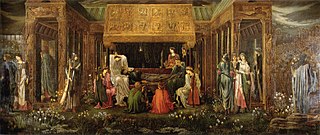
Avalon is a mythical island featured in the Arthurian legend. It first appeared in Geoffrey of Monmouth's 1136 Historia Regum Britanniae as a place of magic where King Arthur's sword Excalibur was made and later where Arthur was taken to recover from being gravely wounded at the Battle of Camlann. Since then, the island has become a symbol of Arthurian mythology, similar to Arthur's castle of Camelot.

Richard Bancroft was an English churchman, Archbishop of Canterbury from 1604 to 1610 and "chief overseer" of the King James Bible.
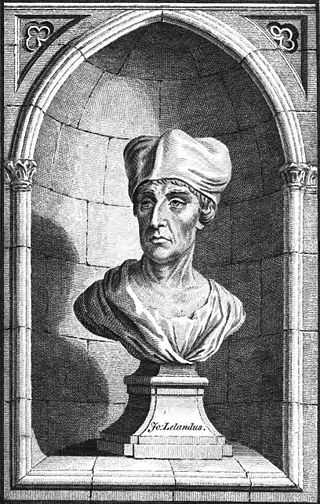
John Leland or Leyland was an English poet and antiquary.

John Whitgift was the Archbishop of Canterbury from 1583 to his death. Noted for his hospitality, he was somewhat ostentatious in his habits, sometimes visiting Canterbury and other towns attended by a retinue of 800 horses. Whitgift's theological views were often controversial.
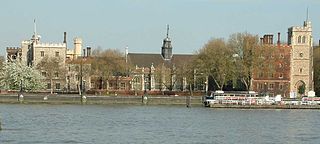
Lambeth Palace is the official London residence of the Archbishop of Canterbury. It is situated in north Lambeth, London, on the south bank of the River Thames, 400 yards south-east of the Palace of Westminster, which houses Parliament, on the opposite bank.

Glastonbury Abbey was a monastery in Glastonbury, Somerset, England. Its ruins, a grade I listed building and scheduled ancient monument, are open as a visitor attraction.
John Hardyng was an English chronicler. He was born in Northern England.
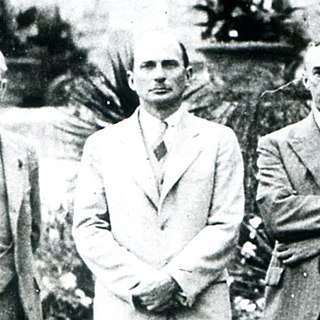
Roger Sherman Loomis (1887–1966) was an American scholar and one of the foremost authorities on medieval and Arthurian literature. Loomis is perhaps best known for showing the roots of Arthurian legend, in particular the Holy Grail, in native Celtic mythology.

John Overall (1559–1619) was the 38th bishop of the see of Norwich from 1618 until his death one year later. He had previously served as Bishop of Coventry and Lichfield, as Dean of St Paul's Cathedral from 1601, as Master of Catharine Hall from 1598, and as Regius Professor of Divinity at Cambridge University from 1596. He also served on the Court of High Commission and as a Translator of the King James Version of the Bible.
Bertwald of Ramsbury was an 11th-century Bishop of Ramsbury and saint.
Felicity Riddy is an academic, author and specialist in late-medieval English and Scottish literature.
Jean de Gagny was a French theologian.
John of Glastonbury was a Benedictine monk and chronicler. His full name may have been John Seen.
The Prophecy of Melkin is a medieval text about an alleged hidden grave of Joseph of Arimathea at Glastonbury in England, containing the Holy Grail. It is contained in a local chronicle written by John of Glastonbury in the mid-14th century, who attributes it to an alleged Celtic bard named Melkin, said to have lived "before Merlin". It is thought to have been created in the context of legends that linked Joseph of Arimathea with the mythical Avalon, Glastonbury and the court of King Arthur, which had arisen in England in the mid-13th century.
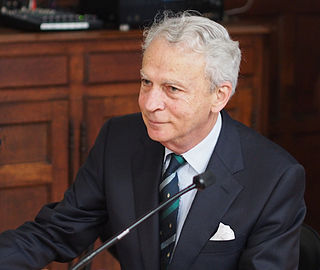
Brian Stock is an American historian. He is a historian of modes of perception between the ancient world and the sixteenth century. He was Rouse Ball Student at Trinity College, Cambridge, and Senior Fellow at the Pontifical Institute of Mediaeval Studies, Toronto, before joining the graduate faculty of the University of Toronto, where he taught history and literature until 2007. He is a Canadian and French citizen.
The Sandars Readership in Bibliography is an annual lecture series given at Cambridge University. Instituted in 1895 at the behest of Samuel Sandars of Trinity College (1837–1894), who left a £2000 bequest to the University, the series has continued to the present day. Together with the Panizzi Lectures at the British Library and the Lyell Lectures at Oxford University, it is considered one of the major British bibliographical lecture series.

Deanne Williams is a Canadian author and literary scholar. She is a Professor in York University's Department of English. A pioneer in early modern Girls' studies, she has published research on Shakespeare's girl characters and girl performers in medieval and early modern England, as well as on the influence of French culture on English literature.
Malcolm Thurlby, teaches art and architectural history at York University, Toronto. His research interests focus on Romanesque and Gothic architecture and sculpture in Europe and 19th and early 20th century architecture in Canada.
Vera historia de morte Arthuri is a short, anonymous 12th- or 13th-century Latin text relating the story of King Arthur's last journey to the Isle of Avalon – which, uniquely, it locates in North Wales – and the disappearance there of his body. It may have been written at Aberconwy Abbey. It has been seen as a reaction to the brief and uncircumstantial mention of Arthur's death given in Geoffrey of Monmouth's Historia Regum Britanniae, and perhaps also to Glastonbury Abbey's claim to be Arthur's place of burial. It survives in six manuscripts, but was unknown to 19th-century scholars and little known for most of the 20th century, not being published in English translation until 1979 or in the original Latin until 1981.
References
- ↑ "James P Carley". yorku.ca. Archived from the original on September 14, 2018. Retrieved February 11, 2017.
- ↑ "Distinguished Research Professors". yorku.ca. Retrieved February 11, 2017.
- ↑ "Carley, James P." worldcat.org. Retrieved February 11, 2017.
- ↑ "Retired York University professor first Canadian to head a London livery". theglobeandmail.com. December 29, 2016. Retrieved February 11, 2017.
- ↑ Carley, James P. 2018. Books and Bookmen in Early Modern Britain : Essays Presented to James P. Carley. Edited by James M. W. Willoughby and Jeremy Catto. Toronto: Pontifical Institute of Mediaeval Studies.
- ↑ Carley, James P. (2013) "The Libraries of Archbishops Whitgift and Bancroft." The Book Collector 62 (no 2) Summer: 208-228.
- ↑ "York University professor first Canadian to receive Bibliographical Society Gold Medal". yfile.news.yorku.ca. August 14, 2019. Retrieved August 19, 2019.